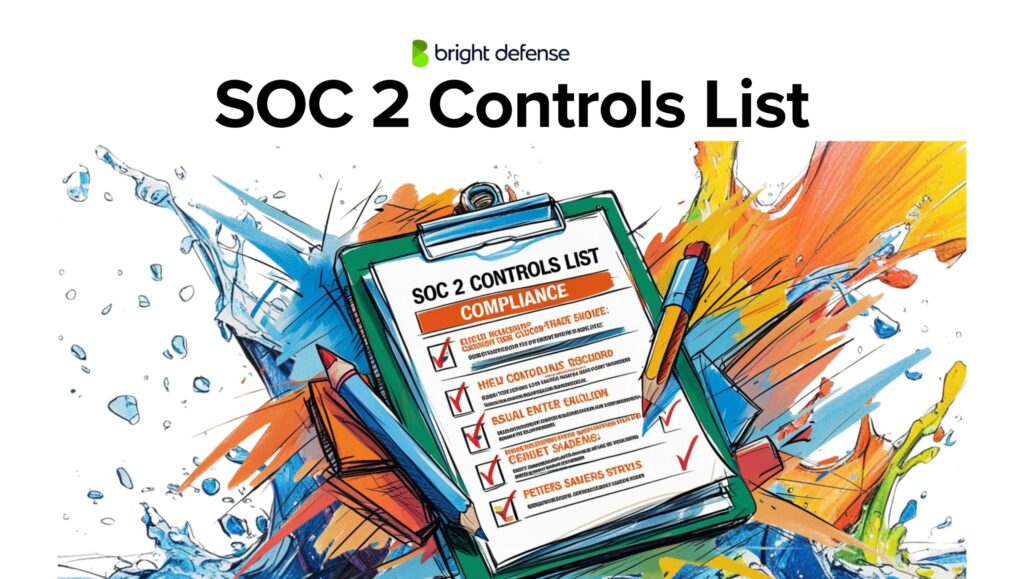
Tim Mektrakarn - CISSP | CISA | ISO 27001
June 28, 2025
NIST 800-171 vs 800-53: A Comparative Analysis of Frameworks
Introduction
Welcome to the essential guide on NIST 800-171 vs 800-53 for protecting your small or medium-sized business in the digital age. Cybersecurity frameworks aren’t just a protective measure; they are a crucial backbone supporting the safety and integrity of your business operations. Today, we’re turning the spotlight on the National Institute of Standards and Technology (NIST), a beacon in the cybersecurity landscape.
In this blog post, we’ll delve deep into two of NIST’s pivotal standards: NIST 800-171 vs 800-53. Our goal is to demystify these frameworks for you. By comparing and contrasting them, we’ll empower you to make an informed decision about which framework aligns best with your business’s specific security requirements. Let’s embark on this journey to bolster your business’s defenses!
Understanding NIST 800-171 vs 800-53
Step into the realm of NIST 800-171, a standard specifically designed to safeguard controlled unclassified information (CUI) within non-federal information systems and organizations. As a small or medium-sized business owner, embracing this framework can significantly elevate your data security protocols.
NIST 800-171 sets forth a series of robust requirements aimed at protecting sensitive information from cybersecurity threats. These include access control, incident response, and system and information integrity, among others. Such measures ensure that your operational integrity remains uncompromised and that you maintain trust with partners and customers.
This standard primarily affects contractors and subcontractors serving federal agencies, requiring them to secure their systems to protect the CUI they handle. However, any organization that processes, stores, or transmits CUI can benefit from implementing these guidelines. NIST 800-171 is a crucial framework behind the Department of Defense’s Cybersecurity Maturity Model Certification (CMMC).
The main objective of NIST 800-171 is to enforce a protective baseline for private sector entities that might not otherwise be secured under federal mandates. By adhering to these guidelines, you’re not only complying with regulations but also fortifying your business against potential cyber threats. Let’s gear up your business defenses with NIST 800-171!

Understanding NIST 800-53 vs 800-171
NIST 800-53 is your gateway to comprehensive security for federal information systems, except those related to national security. As an SMB owner, you can dramatically enhance your cybersecurity posture by adopting this framework, especially if you’re involved with federal information systems or seeking to implement high security standards.
This framework outlines a diverse set of security and privacy controls that are designed to offer a structured approach to managing cybersecurity risk. These controls cover areas such as access control, risk assessment, system and communications protection, and more, providing a robust shield against potential cyber threats.
While NIST 800-53 is primarily aimed at federal agencies and systems, its comprehensive nature makes it a valuable resource for any organization that wants to establish a strong security framework. This includes private sector firms, state and local governments, and contractors who manage, process, or store federal information.
NIST 800-53 aims to offer a catalog of security controls tailored to protect organizational operations and assets, individuals, other organizations, and the nation from diverse threats such as hostile cyber attacks, natural disasters, structural failures, and human errors. By implementing NIST 800-53, you not only meet stringent compliance requirements but also significantly strengthen your defenses against disruptions and threats in the digital landscape. Equip your business with NIST 800-53 and turn cybersecurity into one of your strategic assets.

NIST 800-53 Control Baselines
The three control baselines defined within this framework are:
Low Baseline:
- Purpose: Applied to information systems where the loss of confidentiality, integrity, or availability would have a limited adverse effect on organizational operations, assets, or individuals.
- Scope: Contains a minimal set of controls that provide basic security measures.
- Examples of Controls: Basic access control, minimal incident response, and basic system maintenance.
Moderate Baseline:
- Purpose: Used for information systems where the impact of loss is moderate, potentially causing significant adverse effects on operations, assets, or individuals.
- Scope: Includes more stringent controls than the low baseline, addressing additional risks.
- Examples of Controls: Enhanced user authentication, more comprehensive incident response plans, and more robust system and communications protection.
High Baseline:
- Purpose: Reserved for information systems where the loss of confidentiality, integrity, or availability could have severe or catastrophic adverse effects.
- Scope: Incorporates the most rigorous controls to address high-impact risks.
- Examples of Controls: Strong access controls, extensive monitoring and logging, comprehensive risk management strategies, and continuous security assessments.
Each baseline progressively increases in the number and rigor of required controls to match the potential impact level on the organization, ensuring appropriate security measures are in place based on the system’s criticality.
Key Differences Between NIST 800-171 vs NIST 800-53
Navigating the complexities of NIST 800-171 and NIST 800-53 can seem daunting, but understanding their key differences will help you determine the right framework for your business. Let’s break down these standards to highlight how they differ in scope, compliance requirements, unique controls, and implementation challenges.
Scope and Applicability:
NIST 800-171 is specifically tailored for non-federal organizations that handle Controlled Unclassified Information (CUI). Its primary goal is to protect this information when processed, stored, or transmitted by a non-federal system, making it essential for contractors working with the federal government. On the other hand, NIST 800-53 is designed for federal information systems and those interfacing with them, except national security systems. Its broader scope makes it applicable to all federal agencies and can serve as a comprehensive model for non-government systems that aim to meet similar high standards.
Differences in Compliance Requirements:
NIST 800-171 has a more focused and concise set of requirements, comprising 110 controls across 14 families, designed specifically to safeguard CUI. These controls are less complex and more specific to the types of data and interactions typical for federal contractors. In contrast, NIST 800-53 includes an extensive catalog of over 1,000 controls across 20 control families, offering a more granular approach to security and privacy, adaptable to a variety of risk environments and applicable to a broader range of data types.

Specific Controls Unique to Each Standard:
While there is significant overlap in the controls between NIST 800-171 and NIST 800-53, each has unique aspects tailored to its target audience. For instance, NIST 800-171 focuses heavily on ensuring the confidentiality of CUI, with controls specifically aimed at minimizing access and exposure of sensitive information to unauthorized users. NIST 800-53, however, provides a broader range of controls that address not only confidentiality but also the integrity and availability of systems and information, reflecting its wider applicability and the diverse security needs of federal agencies.
Implementation Challenges for Each:
For SMBs, implementing NIST 800-171 is generally less burdensome due to its narrower scope and the specific nature of its controls. The challenge lies in understanding which parts of your IT environment might be involved in handling CUI and ensuring those areas comply. NIST 800-53 can be more challenging to implement due to its complexity and the breadth of its controls, which require a more comprehensive approach to security governance and risk management practices.

Choosing the Right Framework for Your Organization
Selecting the right cybersecurity framework is a pivotal decision that can significantly impact the security posture and compliance status of your business. Whether you opt for NIST 800-171 or NIST 800-53, the choice should align with your business operations, regulatory requirements, and cybersecurity goals. Here are factors to consider, situational analyses for different organizations, and tips for effective implementation:
Factors to Consider:
- Type of Information Handled: If your business processes, stores, or transmits Controlled Unclassified Information (CUI) primarily as a federal contractor, NIST 800-171 is designed for you. For organizations operating directly with federal systems or a wide array of data types, NIST 800-53 offers a broader framework.
- Compliance Requirements: Determine the specific regulatory requirements affecting your organization. NIST 800-171 is typically mandated for defense contractors and others within the federal supply chain, whereas NIST 800-53 is required for federal information systems.
- Resource Availability: Implementing NIST 800-53 is generally more resource-intensive due to its comprehensive nature. Assess whether your organization has the resources to adopt and maintain the extensive controls required by NIST 800-53 or if the more focused approach of NIST 800-171 is more feasible.
Situational Analysis for Different Types of Organizations:
- Small Business Federal Contractors: If handling CUI is part of your service offering to the federal government, NIST 800-171 is your go-to standard to comply with federal requirements while safeguarding sensitive information.
- Non-Profit Organizations with Federal Ties: For those managing information systems that interact with federal agencies, adopting NIST 800-53 could provide the necessary guidelines to ensure that interactions are secure and compliant.
- Tech Startups Aiming for Federal Contracts: Startups planning to engage in federal contracts should consider preparing early by aligning their security controls with NIST 800-171 to streamline the transition into federal work.
Tips on Implementing the Frameworks Effectively:
- Conduct a Gap Analysis: Start by assessing your current security posture against the requirements of the chosen NIST standard. This will help identify areas of weakness and prioritize improvements.
- Tailor Controls to Your Needs: Both frameworks allow some flexibility. Customize the controls to fit the specific circumstances and risks of your organization.
- Educate and Train Staff: Ongoing education and training for all employees are crucial to effectively implement and maintain cybersecurity measures. Ensure everyone understands their role in maintaining security.
- Regularly Review and Update Security Measures: Cyber threats evolve rapidly; regularly review and update your security measures to address new challenges. Annual reviews and updates to your security practices can help keep your defenses strong.
By carefully considering these aspects, you can choose a cybersecurity framework that not only meets legal and contractual obligations but also strengthens your organization’s overall security infrastructure.
Conclusion
Throughout this discussion, we’ve explored the nuances of NIST 800-171 and NIST 800-53, delving into their purposes, requirements, and the types of organizations they each best serve. We’ve identified that NIST 800-171 is crucial for protecting Controlled Unclassified Information in non-federal systems, making it ideal for contractors and subcontractors working with the federal government. On the other hand, NIST 800-53 offers a broader set of controls designed for federal information systems, providing a comprehensive framework that supports a wide range of security needs.
Choosing the right framework—whether NIST 800-171 / CMMC Level 2 or NIST 800-53—can significantly impact your organization’s cybersecurity posture. The decision should align with the specific types of information you handle, your compliance obligations, and your capacity to implement and maintain the framework’s requirements. Proper implementation involves understanding your current security infrastructure, tailoring the controls to fit your operational context, and committing to ongoing education and regular updates.
Ultimately, the right cybersecurity framework not only helps you comply with regulatory requirements but also fortifies your defenses against potential cyber threats. This proactive approach to cybersecurity not only protects your organization’s valuable information assets but also builds trust with your clients and partners, ensuring a resilient and secure business environment.
Secure your organization with Bright Defense! Our expert consultants help you implement NIST 800-171 for CMMC Level 2 and NIST 800-53 for StateRAMP, FedRAMP, TX-RAMP, AZRAMP, FERPA, and TPN compliance. Contact us today to ensure your systems meet the highest security and compliance standards.
Get In Touch



